三、PyQt5 之 常用基础控件(Python操作PyQt)
一、窗口
1.1 窗口的类型
QMainWindow:主窗口,可以包含菜单栏、工具栏、状态栏和标题栏,是最常见的窗口形式
QDialog:是对话窗口的基类。没有菜单栏,工具栏,状态栏(常见为弹出窗口)
QWidget:不确定窗口的用途,就使用该窗口QWidget
import sys from PyQt5.QtWidgets import QMainWindow, QApplication from PyQt5.QtGui import QIcon # 添加图标 class FirstMainWin(QMainWindow): def __init__(self): super(FirstMainWin, self).__init__() # 设置主窗口标题 self.setWindowTitle("第一个主窗口应用") # 设置窗口尺寸 self.resize(400, 300) # 获取状态栏 self.status = self.statusBar() # 显示只存在 5s 的消息 self.status.showMessage("只显示5s的消息", 5000) if __name__ == '__main__': app = QApplication(sys.argv) # 设置图标 app.setWindowIcon(QIcon('./images/Dragon.ico')) main = FirstMainWin() main.show() sys.exit(app.exec_())
计算窗口坐标,对于所有的组件和窗口,关于位置的确定都是通过指定左上角的坐标来实现。
实现使得窗口居中,先获得总窗口的坐标,再得到显示的窗口坐标,根据公式:
左上顶点 x 坐标 = (屏幕宽度 - 显示窗口宽度)/ 2
左上顶点 y 坐标 = (屏幕高度 - 显示窗口高度)/ 2import sys from PyQt5.QtWidgets import QMainWindow, QApplication, QDesktopWidget from PyQt5.QtGui import QIcon # 添加图标 class CentosForm(QMainWindow): def __init__(self): super(CentosForm, self).__init__() # 设置主窗口标题 self.setWindowTitle("让窗口居中") # 设置窗口尺寸 self.resize(400, 300) def center(self): # 获取屏幕的大小 screen = QDesktopWidget().screenGeometry() # 获取窗口的大小 size = self.geometry() # 获取窗口居中的x, y坐标 newLeft = (screen.width() - size.width()) / 2 newTop = (screen.height() - size.height()) / 2 self.move(newLeft, newTop) if __name__ == '__main__': app = QApplication(sys.argv) main = CentosForm() main.center() main.show() sys.exit(app.exec_())
借助 QApplication 中的退出应用程序的方法实现退出窗口。
在退出过程中,创建一个button并且将button的信号和我们自定义的槽进行关联import sys from PyQt5.QtWidgets import QMainWindow, QApplication, QWidget from PyQt5.QtWidgets import QHBoxLayout # 水平布局 from PyQt5.QtWidgets import QPushButton # button class QuitApplication(QMainWindow): def __init__(self): super(QuitApplication, self).__init__() self.resize(300, 120) self.setWindowTitle("退出程序") # 添加button按钮 self.button1 = QPushButton("退出应用程序") # 将信号与槽关联 self.button1.clicked.connect(self.onClick_Button) # 创建水平布局 layout = QHBoxLayout() # 将button添加到水平布局中 layout.addWidget(self.button1) # 添加组件的根 mainFrame = QWidget() mainFrame.setLayout(layout) # 充满整个屏幕窗口 self.setCentralWidget(mainFrame) # 按钮单击事件的方法(自定义的槽) def onClick_Button(self): # 获得信号对象,即获取button队形 sender = self.sender() print(sender.text() + "按键被按下") app = QApplication.instance() # 退出应用程序 app.quit() if __name__ == '__main__': app = QApplication(sys.argv) main = QuitApplication() main.show() sys.exit(app.exec_())
对于窗口,我们可以获取窗口的坐标位置,即窗口左上角在屏幕坐标系中的位置;可以获取窗口的功能区的大小以及窗口包含功能栏的大小,通过二者的差值可以得到功能栏的大小。
import sys from PyQt5.QtWidgets import QMainWindow, QApplication, QWidget from PyQt5.QtWidgets import QHBoxLayout # 水平布局 from PyQt5.QtWidgets import QPushButton # button def onClick_Button(): print("1") print("widget.x() = %s" % widget.x()) # 250 窗口横坐标 print("widget.y() = %s" % widget.y()) # 200 窗口纵坐标 print("widget.width() = %s" % widget.width()) # 300 工作区的宽度 print("widget.height() = %s" % widget.height()) # 240 工作区的高度 print("2") print("widget.geometry().x() = %s" % widget.geometry().x()) # 251 工作区横坐标 + 边框 print("widget.geometry().y() = %s" % widget.geometry().y()) # 238 工作区纵坐标 print("widget.geometry().width() = %s" % widget.geometry().width()) # 300 工作区宽度 print("widget.geometry().height() = %s" % widget.geometry().height()) # 240 工作区高度 print("3") print("widget.frameGeometry().x() = %s" % widget.frameGeometry().x()) # 250 窗口横坐标 print("widget.frameGeometry().y() = %s" % widget.frameGeometry().y()) # 200 窗口纵坐标 print("widget.frameGeometry().width() = %s" % widget.frameGeometry().width()) # 302 窗口宽度 + 边框 print("widget.frameGeometry().height() = %s" % widget.frameGeometry().height()) # 279 窗口高度 if __name__ == '__main__': app = QApplication(sys.argv) # 创建 QWidget类对象 widget = QWidget() # 创建按钮 btn = QPushButton(widget) btn.setText("按钮") btn.clicked.connect(onClick_Button) btn.move(24, 52) widget.resize(300, 240) # 这个是设置窗口工作区的尺寸,不是窗口的实际大小 widget.move(250, 200) widget.setWindowTitle("屏幕坐标系") widget.show() sys.exit(app.exec_())
1.6 设置窗口和应用程序图标(setWindowIcon)
1.6.1 窗口与QApplication 的 setWindowIcon 使用
窗口的setWindowIcon方法 创建应用窗口时,在windows环境下,窗口的左上角会存在一个标志, 苹果系统不起作用
QApplication中的 setWindowIcon 方法用于设置主窗口的图标和应用程序的图标,但是调用了窗口的 setWindowIcon方法,QApplication中的 就只能设置应用程序的图标了
import sys from PyQt5.QtWidgets import QMainWindow, QApplication from PyQt5.QtGui import QIcon # 添加图标 class IconForm(QMainWindow): def __init__(self): super(IconForm, self).__init__() self.initUI() def initUI(self): # 同时设置窗口的尺寸和位置 self.setGeometry(300, 300, 250, 250) # 设置主窗口标题 self.setWindowTitle("设置窗口图标") # 设置窗口尺图标 self.setWindowIcon(QIcon("./images/Basilisk.ico")) if __name__ == '__main__': app = QApplication(sys.argv) # app.setWindowIcon(QIcon('./images/Dragon.ico')) main = IconForm() main.show() sys.exit(app.exec_())
# 当窗口在windows中运行时,如果想要将图片也生成一个windows工具栏的图标,则添加代码如下: import ctypes ctypes.windll.shell32.SetCurrentProcessExplicitAppUserModelID("myappid")import sys from PyQt5.QtWidgets import QMainWindow, QApplication from PyQt5.QtGui import QIcon # 添加图标 import ctypes ctypes.windll.shell32.SetCurrentProcessExplicitAppUserModelID("myappid") class IconForm(QMainWindow): def __init__(self): super(IconForm, self).__init__() self.initUI() def initUI(self): # 同时设置窗口的尺寸和位置 self.setGeometry(300, 300, 250, 250) # 设置主窗口标题 self.setWindowTitle("设置窗口图标") # 设置窗口尺图标 self.setWindowIcon(QIcon("./images/Basilisk.ico")) if __name__ == '__main__': app = QApplication(sys.argv) # app.setWindowIcon(QIcon('./images/Dragon.ico')) main = IconForm() main.show() sys.exit(app.exec_())
import sys from PyQt5.QtWidgets import QMainWindow, QApplication, QHBoxLayout, QToolTip, QPushButton, QWidget from PyQt5.QtGui import QFont # 字体 class ToolTipForm(QMainWindow): def __init__(self): super(ToolTipForm, self).__init__() self.initUI() def initUI(self): # 设置字体 QToolTip.setFont(QFont("SanSerif", 12)) # 给窗口设置提示 self.setToolTip("今天是<b>星期五<b>") # 支持富文本 # 设置窗口大小和位置 self.setGeometry(300, 300, 200, 300) # 设置窗口辩题 self.setWindowTitle("设置控件提示信息") self.button1 = QPushButton("我的按钮") self.button1.setToolTip("这是一个按钮") # 创建水平布局 layout = QHBoxLayout() # 将button添加到水平布局中 layout.addWidget(self.button1) # 添加组件的根 mainFrame = QWidget() mainFrame.setLayout(layout) # 充满整个窗口 self.setCentralWidget(mainFrame) if __name__ == '__main__': app = QApplication(sys.argv) main = ToolTipForm() main.show() sys.exit(app.exec_())
三、QLabel控件(展示文本信息)
3.1 QLabel控件的基本使用
QLabel控件常用方法:
setAlignment():设置文本的对齐方式
setIndent():设置文本缩进
text():获取文本内容
setBuddy():设置伙伴关系
setText():设置文本内容
selectedText():返回所选择的字符
setWordWrap():设置是否允许换行
QLabel常用的信号(事件):
1. 当鼠标滑过QLabel控件时触发:linkHovered
2. 当鼠标单击QLabel控件时触发:linkActivatedimport sys from PyQt5.QtWidgets import QVBoxLayout, QMainWindow, QApplication, QLabel, QWidget from PyQt5.QtGui import QPalette # 调色板,设置label的背景色 from PyQt5.QtCore import Qt from PyQt5.QtGui import QPixmap # 图片 class QlabelDemo(QWidget): def __init__(self): super(QlabelDemo, self).__init__() self.initUI() def initUI(self): label1 = QLabel(self) label2 = QLabel(self) label3 = QLabel(self) label4 = QLabel(self) # 设置内容 label1.setText("<font color=yellow>这是一个文本标签.</font>") # 设置自动填充背景 label1.setAutoFillBackground(True) # 创建调色板 palette = QPalette() # 设置颜色 palette.setColor(QPalette.Window, Qt.blue) # label1使用调色板 label1.setPalette(palette) # 设置居中对齐 label1.setAlignment(Qt.AlignCenter) label2.setText("<a href='#'> 欢迎使用Python GUI程序 </a>") label3.setAlignment(Qt.AlignCenter) label3.setToolTip("这是一个图片标签") label3.setPixmap(QPixmap("./images/python.jpg")) # 如果设为True,用浏览器打开网页,如果设为False,调用槽函数 label4.setOpenExternalLinks(False) label4.setText("<a href='https://www.cnblogs.com/wangyong123/'>欢迎访问我的博客</a>") label4.setAlignment(Qt.AlignRight) label4.setToolTip("这是一个超链接") # 垂直布局 vbox = QVBoxLayout() vbox.addWidget(label1) vbox.addWidget(label2) vbox.addWidget(label3) vbox.addWidget(label4) # 设置信号槽函数 label2.linkHovered.connect(self.linkHover) label4.linkActivated.connect(self.linkClicked) self.setLayout(vbox) self.setWindowTitle("QLabel控件演示") def linkHover(self): print("当鼠标划过label2标签时 触发事件") def linkClicked(self): print("当鼠标单击label4标签时 触发事件") if __name__ == '__main__': app = QApplication(sys.argv) main = QlabelDemo() main.show() sys.exit(app.exec_())
# mainLayout.addWidget(控件对象, rowIndex, columnIndex, row, column) from PyQt5.QtWidgets import * import sys class QLabelBuddy(QDialog): def __init__(self): super().__init__() self.initUI() def initUI(self): self.setWindowTitle("QLabel与伙伴控件") # 添加热键 nameLabel = QLabel("&Name", self) # 输入 alt + N # 创建LineEdit对象 nameLineEdit = QLineEdit(self) # 设置伙伴关系 nameLabel.setBuddy(nameLineEdit) passwordLabel = QLabel('&Password', self) # 输入 alt + P passwordLineEdit = QLineEdit(self) # 设置伙伴控件 passwordLabel.setBuddy(passwordLineEdit) btnOK = QPushButton("&OK") btnCancel = QPushButton("&Cancel") # 使用栅格布局, 并手工设置组件位置 mainLayout = QGridLayout(self) mainLayout.addWidget(nameLabel, 0, 0) mainLayout.addWidget(nameLineEdit, 0, 1, 1, 2) # 位置1行2列 并占用1行2列的宽度 mainLayout.addWidget(passwordLabel, 1, 0) mainLayout.addWidget(passwordLineEdit, 1, 1, 1, 2) mainLayout.addWidget(btnOK, 2, 1) mainLayout.addWidget(btnCancel, 2, 2) if __name__ == '__main__': app = QApplication(sys.argv) main = QLabelBuddy() main.show() sys.exit(app.exec_())
四、QLineEdit控件
4.1 QLineEdit与回显模式(EchoMode)
#!/usr/bin/python # -*- coding:utf-8 -*- from PyQt5.QtWidgets import * import sys """ 基本功能:输入当行的文本 EchoMode: 回显模式, 输入内容能显示出来, 也就是显示模式 4中回显模式: 1. Normal 正常回显模式 2. NoEcho 不回显模式 3. Password 密码输入 4. PasswordEchoOnEdit 先是能看到输入内容,然后再变成密码模式 """ class QLineEditEchoMode(QWidget): def __init__(self): super(QLineEditEchoMode, self).__init__() self.initUI() def initUI(self): self.setWindowTitle("文本输入框的回显模式") formLayout = QFormLayout() normalLineEdit = QLineEdit() noEchoLineEdit = QLineEdit() passwordLineEdit = QLineEdit() passwordEchoOnEditLineEdit = QLineEdit() formLayout.addRow("Normal", normalLineEdit) formLayout.addRow("NoEcho", noEchoLineEdit) formLayout.addRow("Password", passwordLineEdit) formLayout.addRow("PasswordEchoOnEdit", passwordEchoOnEditLineEdit) # placeholdertext 文本框内容没有输入,灰色显示提示功能 normalLineEdit.setPlaceholderText("Normal") noEchoLineEdit.setPlaceholderText("NoEcho") passwordLineEdit.setPlaceholderText("Password") passwordEchoOnEditLineEdit.setPlaceholderText("PasswordEchoOnEdit") normalLineEdit.setEchoMode(QLineEdit.Normal) noEchoLineEdit.setEchoMode(QLineEdit.NoEcho) passwordLineEdit.setEchoMode(QLineEdit.Password) passwordEchoOnEditLineEdit.setEchoMode(QLineEdit.PasswordEchoOnEdit) self.setLayout(formLayout) if __name__ == '__main__': app = QApplication(sys.argv) main = QLineEditEchoMode() main.show() sys.exit(app.exec_())
#!/usr/bin/python # -*- coding:utf-8 -*- """ QLinEdit 校验器, 如限制只能输入整数、浮点数或者满足一定条件的字符串 """ import sys from PyQt5.QtWidgets import * from PyQt5.QtGui import QIntValidator, QDoubleValidator, QRegExpValidator # 整数类型,浮点型,正则表达式 from PyQt5.QtCore import QRegExp # 正则表达式的类 class QlineEditValidator(QWidget): def __init__(self): super(QlineEditValidator, self).__init__() self.initUI() def initUI(self): self.setWindowTitle("校验器") # 创建表单布局 formLayout = QFormLayout() intLineEdit = QLineEdit() doubleLineEdit = QLineEdit() validatorLineEdit = QLineEdit() formLayout.addRow("整数类型", intLineEdit) formLayout.addRow("浮点类型", doubleLineEdit) formLayout.addRow("数字和字母类型", validatorLineEdit) # 设置提示文本 intLineEdit.setPlaceholderText("整型") doubleLineEdit.setPlaceholderText("浮点型") validatorLineEdit.setPlaceholderText("子母和数字") # 整数校验器 [1, 99] intValidator = QIntValidator() intValidator.setRange(1, 99) doubleValidator = QDoubleValidator() # 浮点校验器 [-360, 360], 精度小数点后2位 doubleValidator.setRange(-360, 360) # 设置浮点数表示法 doubleValidator.setNotation(QDoubleValidator.StandardNotation) # 设置精度,小数点后 2 位 doubleValidator.setDecimals(2) # 字符和数字校验器 reg = QRegExp('[a-zA-z0-9]+$') validator = QRegExpValidator() validator.setRegExp(reg) # 设置校验器 intLineEdit.setValidator(intValidator) doubleLineEdit.setValidator(doubleValidator) validatorLineEdit.setValidator(validator) self.setLayout(formLayout) if __name__ == '__main__': app = QApplication(sys.argv) main = QlineEditValidator() main.show() sys.exit(app.exec_())
#!/usr/bin/python # -*- coding:utf-8 -*- """ 用掩码限制QLineEdit控件的输入 A ASCII字母字符是必须输入的(A-Z、a-z) a ASCII字母字符是允许输入的,但不是必需的(A-Z、a-z) N ASCII字母字符是必须输入的(A-Z、a-z、0-9) n ASII字母字符是允许输入的,但不是必需的(A-Z、a-z、0-9) X 任何字符都是必须输入的 x 任何字符都是允许输入的,但不是必需的 9 ASCII数字字符是必须输入的(0-9) 0 ASCII数字字符是允许输入的,但不是必需的(0-9) D ASCII数字字符是必须输入的(1-9) d ASCII数字字符是允许输入的,但不是必需的(1-9) # ASCI数字字符或加减符号是允许输入的,但不是必需的 H 十六进制格式字符是必须输入的(A-F、a-f、0-9) h 十六进制格式字符是允许输入的,但不是必需的(A-F、a-f、0-9) B 二进制格式字符是必须输入的(0,1) b 二进制格式字符是允许输入的,但不是必需的(0,1) > 所有的字母字符都大写 < 所有的字母字符都小写 ! 关闭大小写转换 \ 使用"\"转义上面列出的字符 """ from PyQt5.QtWidgets import * import sys class QLineEditMask(QWidget): def __init__(self): super(QLineEditMask, self).__init__() self.initUI() def initUI(self): self.setWindowTitle("用掩码限制QLineEdit控件的输入") formLayout = QFormLayout() ipLineEdit = QLineEdit() macLineEdit = QLineEdit() dateLineEdit = QLineEdit() licenseLineEdit = QLineEdit() # 192.168.10.10 ipLineEdit.setInputMask("000.000.000.000;_") # 没有输入的时候 0 显示为 _ macLineEdit.setInputMask("HH:HH:HH:HH:HH:HH;_") dateLineEdit.setInputMask("0000-00-00") licenseLineEdit.setInputMask(">AAAAA-AAAAA-AAAAA-AAAAA-AAAAA;#") formLayout.addRow("数字掩码", ipLineEdit) formLayout.addRow("Mac掩码", macLineEdit) formLayout.addRow("日期掩码", dateLineEdit) formLayout.addRow("许可证掩码", licenseLineEdit) self.setLayout(formLayout) if __name__ == '__main__': app = QApplication(sys.argv) main = QLineEditMask() main.show() sys.exit(app.exec_())
#!/usr/bin/python # -*- coding:utf-8 -*- import sys from PyQt5.QtWidgets import * from PyQt5.QtGui import * from PyQt5.QtCore import Qt class QLineEditDemo(QWidget): def __init__(self): super(QLineEditDemo, self).__init__() self.initUI() def initUI(self): edit1 = QLineEdit() # 使用 int 校验器 edit1.setValidator(QIntValidator()) # 不超过9999, 4代表是4位 edit1.setMaxLength(4) # 设置右对齐 edit1.setAlignment(Qt.AlignRight) # 设置字体 edit1.setFont(QFont('Arial', 20)) edit2 = QLineEdit() # 范围 0.99 - 99.99 精度为 2 edit2.setValidator(QDoubleValidator(0.99, 99.99, 2)) edit3 = QLineEdit() edit3.setInputMask("99_9999_999999;#") edit4 = QLineEdit() edit4.textChanged.connect(self.textChanged) edit5 = QLineEdit() edit5.setEchoMode(QLineEdit.Password) edit5.editingFinished.connect(self.enterPress) edit6 = QLineEdit("Hello PyQt5") edit6.setReadOnly(True) # 设置表单布局 formLayout = QFormLayout() formLayout.addRow("整数校验", edit1) formLayout.addRow("浮点数校验", edit2) formLayout.addRow("Input Mask", edit3) formLayout.addRow("文本变化", edit4) formLayout.addRow("密码", edit5) formLayout.addRow("只读模式", edit6) self.setLayout(formLayout) self.setWindowTitle("QLineEdit综合案例") def textChanged(self, text): print('输入的内容:' + text) def enterPress(self): print('已输入值') if __name__ == '__main__': app = QApplication(sys.argv) main = QLineEditDemo() main.show() sys.exit(app.exec_())
#!/usr/bin/python # -*- coding:utf-8 -*- import sys from PyQt5.QtWidgets import * class QTextEditDemo(QWidget): def __init__(self): super(QTextEditDemo, self).__init__() self.initUI() def initUI(self): self.setWindowTitle("QTextEdit控件演示") self.resize(300, 320) self.textEdit = QTextEdit() self.buttonText = QPushButton("显示文本") self.buttonHTML = QPushButton("显示HTML") self.buttonToText = QPushButton("获取文本") self.buttonToHTML = QPushButton("获取HTML") # 创建垂直布局 layout = QVBoxLayout() layout.addWidget(self.textEdit) layout.addWidget(self.buttonText) layout.addWidget(self.buttonToText) layout.addWidget(self.buttonHTML) layout.addWidget(self.buttonToHTML) self.setLayout(layout) self.buttonText.clicked.connect(self.onClick_ButtonText) self.buttonToText.clicked.connect(self.onClick_ButtonToText) self.buttonHTML.clicked.connect(self.onClick_ButtonHTML) self.buttonToHTML.clicked.connect(self.onClick_ButtonToHTML) def onClick_ButtonText(self): self.textEdit.setPlainText("Hello World,世界你好吗?") def onClick_ButtonToText(self): print(self.textEdit.toPlainText()) def onClick_ButtonHTML(self): self.textEdit.setHtml('<font color="blue" size="5">Hello World</font>') def onClick_ButtonToHTML(self): print(self.textEdit.toHtml()) if __name__ == '__main__': app = QApplication(sys.argv) main = QTextEditDemo() main.show() sys.exit(app.exec_())
QAbstractButton # 所有类的父类
QPushButton # 普通按钮
AToolButton # 工具条按钮
QRadioButton # 单选按钮
QCheckBox # 多选按钮
#!/usr/bin/python # -*- coding:utf-8 -*- import sys from PyQt5.QtWidgets import * from PyQt5.QtCore import * from PyQt5.QtGui import * class QPushButtonDemo(QDialog): def __init__(self): super(QPushButtonDemo, self).__init__() self.initUI() def initUI(self): self.setWindowTitle("QPushButtonDemo") layout = QVBoxLayout() self.button1 = QPushButton("第1个按钮") self.button1.setText("First Button1") # 按钮可以复选,类似QCheckBox功能。按下去之后需要再按一次才能起来 self.button1.setCheckable(True) self.button1.toggle() # 常规方式信号与槽绑定 self.button1.clicked.connect(self.buttonState) # 直接使用下面的方式调用槽函数,但是参数没办法传递 # self.button1.clicked.connect(self.whichButton) # 使用lamdba 表达式来传递参数 self.button1.clicked.connect(lambda: self.whichButton(self.button1)) layout.addWidget(self.button1) # 在文本前面显示图像 self.button2 = QPushButton("图像按钮") self.button2.setIcon(QIcon(QPixmap("./images/python.png"))) self.button2.clicked.connect(lambda: self.whichButton(self.button2)) layout.addWidget(self.button2) self.button3 = QPushButton("不可用按钮") self.button3.setEnabled(False) layout.addWidget(self.button3) # 默认按钮 self.button4 = QPushButton("&MyButton") self.button4.setDefault(True) self.button4.clicked.connect(lambda: self.whichButton(self.button4)) layout.addWidget(self.button4) self.setLayout(layout) self.resize(400, 300) def whichButton(self, btn): print("被单击的按钮是 %s" % btn.text()) def buttonState(self): if self.button1.isChecked(): print("按钮1已经被选中") else: print("按钮1未被选中") if __name__ == '__main__': app = QApplication(sys.argv) main = QPushButtonDemo() main.show() sys.exit(app.exec_())
#!/usr/bin/python # -*- coding:utf-8 -*- import sys from PyQt5.QtWidgets import * from PyQt5.QtCore import * from PyQt5.QtGui import * class QRadioButtonDemo(QWidget): def __init__(self): super(QRadioButtonDemo, self).__init__() self.initUI() def initUI(self): self.setWindowTitle("QRadioButton") # 設置水平布局 layout = QHBoxLayout() self.button1 = QRadioButton("单选按钮1") self.button1.setChecked(True) self.button1.toggled.connect(self.buttonState) layout.addWidget(self.button1) self.button2 = QRadioButton("单选按钮2") self.button2.toggled.connect(self.buttonState) layout.addWidget(self.button2) self.setLayout(layout) def buttonState(self): radioButton = self.sender() if radioButton.isChecked(): print("<" + radioButton.text() + "> 被选中") else: print("<" + radioButton.text() + "> 未被选中") if __name__ == '__main__': app = QApplication(sys.argv) main = QRadioButtonDemo() main.show() sys.exit(app.exec_())
#!/usr/bin/python # -*- coding:utf-8 -*- """ 复选框控件 (QCheckBox) 3中状态 未被选中: 0 半选中: 1 选中: 2 """ import sys from PyQt5.QtWidgets import * from PyQt5.QtGui import * from PyQt5.QtCore import Qt class QCheckBoxDemo(QWidget): def __init__(self): super(QCheckBoxDemo, self).__init__() self.initUI() def initUI(self): self.setWindowTitle("复选框") layout = QHBoxLayout() self.checkBox1 = QCheckBox("复选框控件1") self.checkBox1.setChecked(True) self.checkBox1.stateChanged.connect(lambda: self.checkState(self.checkBox1)) layout.addWidget(self.checkBox1) self.checkBox2 = QCheckBox("复选框控件2") self.checkBox2.stateChanged.connect(lambda: self.checkState(self.checkBox2)) layout.addWidget(self.checkBox2) self.checkBox3 = QCheckBox("半选中") self.checkBox3.stateChanged.connect(lambda: self.checkState(self.checkBox3)) self.checkBox3.setTristate(True) self.checkBox3.setCheckState(Qt.PartiallyChecked) layout.addWidget(self.checkBox3) self.setLayout(layout) def checkState(self, cb): check1Status = self.checkBox1.text() + ' isChecked = ' + str( self.checkBox1.isChecked()) + " checkstate = " + str(self.checkBox1.checkState()) + "\n" check2Status = self.checkBox2.text() + ' isChecked = ' + str( self.checkBox2.isChecked()) + " checkstate = " + str(self.checkBox2.checkState()) + "\n" check3Status = self.checkBox3.text() + ' isChecked = ' + str( self.checkBox3.isChecked()) + " checkstate = " + str(self.checkBox3.checkState()) + "\n" print(check1Status, check2Status, check3Status) if __name__ == '__main__': app = QApplication(sys.argv) main = QCheckBoxDemo() main.show() sys.exit(app.exec_())
#!/usr/bin/python # -*- coding:utf-8 -*- """ 下拉列表控件(QComboBox) 1. 如何将列表项添加到 QComboBox控件中 2. 如何获取列表中的列表项 """ import sys from PyQt5.QtCore import * from PyQt5.QtGui import * from PyQt5.QtWidgets import * class QComboBoxDemo(QWidget): def __init__(self): super(QComboBoxDemo, self).__init__() self.initUI() def initUI(self): self.setWindowTitle("下拉列表控件显示") self.resize(300, 100) layout = QVBoxLayout() self.label = QLabel("请选择编程语言") self.cb = QComboBox() # 添加一个元素 self.cb.addItem("Python") self.cb.addItem("C++") # 同时添加多个元素 self.cb.addItems(["Java", "C", "C#"]) # 添加索引变化的信号槽,一般会自动传递两个参数, 一个控件标签对象, 一个控件索引 self.cb.currentIndexChanged.connect(self.selectionChange) layout.addWidget(self.label) layout.addWidget(self.cb) self.setLayout(layout) def selectionChange(self, index): self.label.setText(self.cb.currentText()) # 调整控件尺寸 self.label.adjustSize() # 输出comboBox 中所有的项 for count in range(self.cb.count()): print("item " + str(count) + " = " + self.cb.itemText(count)) print("current index", index, "selected changed", self.cb.currentText()) if __name__ == '__main__': app = QApplication(sys.argv) main = QComboBoxDemo() main.show() sys.exit(app.exec_())
#!/usr/bin/python # -*- coding:utf-8 -*- """ 计算器控件(QSpinBox) """ import sys from PyQt5.QtCore import * from PyQt5.QtGui import * from PyQt5.QtWidgets import * class QSplinBoxDemo(QWidget): def __init__(self): super(QSplinBoxDemo, self).__init__() self.initUI() def initUI(self): self.setWindowTitle("QSpinBox演示") self.resize(300, 100) layout = QVBoxLayout() self.label = QLabel("当前值") self.label.setAlignment(Qt.AlignCenter) layout.addWidget(self.label) self.sb = QSpinBox() # 设置默认值 self.sb.setValue(18) # 设置范围 self.sb.setRange(10, 30) # 设置步长 self.sb.setSingleStep(2) self.sb.valueChanged.connect(self.valueChange) layout.addWidget(self.sb) self.setLayout(layout) def valueChange(self): self.label.setText("当前值: " + str(self.sb.value())) if __name__ == '__main__': app = QApplication(sys.argv) main = QSplinBoxDemo() main.show() sys.exit(app.exec_())
#!/usr/bin/python # -*- coding:utf-8 -*- """ 滑块控件(QSlider) """ import sys from PyQt5.QtCore import * from PyQt5.QtGui import * from PyQt5.QtWidgets import * class QSliderDemo(QWidget): def __init__(self): super(QSliderDemo, self).__init__() self.initUI() def initUI(self): self.setWindowTitle("滑块控件演示") self.resize(300, 700) layout = QVBoxLayout() self.label = QLabel("你好, PyQt5") self.label.setAlignment(Qt.AlignCenter) layout.addWidget(self.label) # 水平滑块 self.slider = QSlider(Qt.Horizontal) # 设置最小值 self.slider.setMinimum(12) # 设置最大值 self.slider.setMaximum(48) # 设置步长 self.slider.setSingleStep(2) # 设置当前值 self.slider.setValue(18) # 设置刻度的位置,刻度在下方 self.slider.setTickPosition(QSlider.TicksBelow) # 设置刻度的间隔 self.slider.setTickInterval(6) self.slider.valueChanged.connect(self.valueChange) layout.addWidget(self.slider) # 垂直滑块 self.slider1 = QSlider(Qt.Vertical) self.slider1.setMinimum(10) self.slider1.setMaximum(30) self.slider1.setSingleStep(3) self.slider1.setValue(18) # 设置刻度的位置,刻度在左边 self.slider1.setTickPosition(QSlider.TicksLeft) self.slider1.setTickInterval(4) self.slider1.valueChanged.connect(self.valueChange) layout.addWidget(self.slider1) self.setLayout(layout) def valueChange(self): print("当前值: %s" % self.sender().value()) size = self.sender().value() self.label.setFont(QFont("Arial", size)) if __name__ == '__main__': app = QApplication(sys.argv) main = QSliderDemo() main.show() sys.exit(app.exec_())

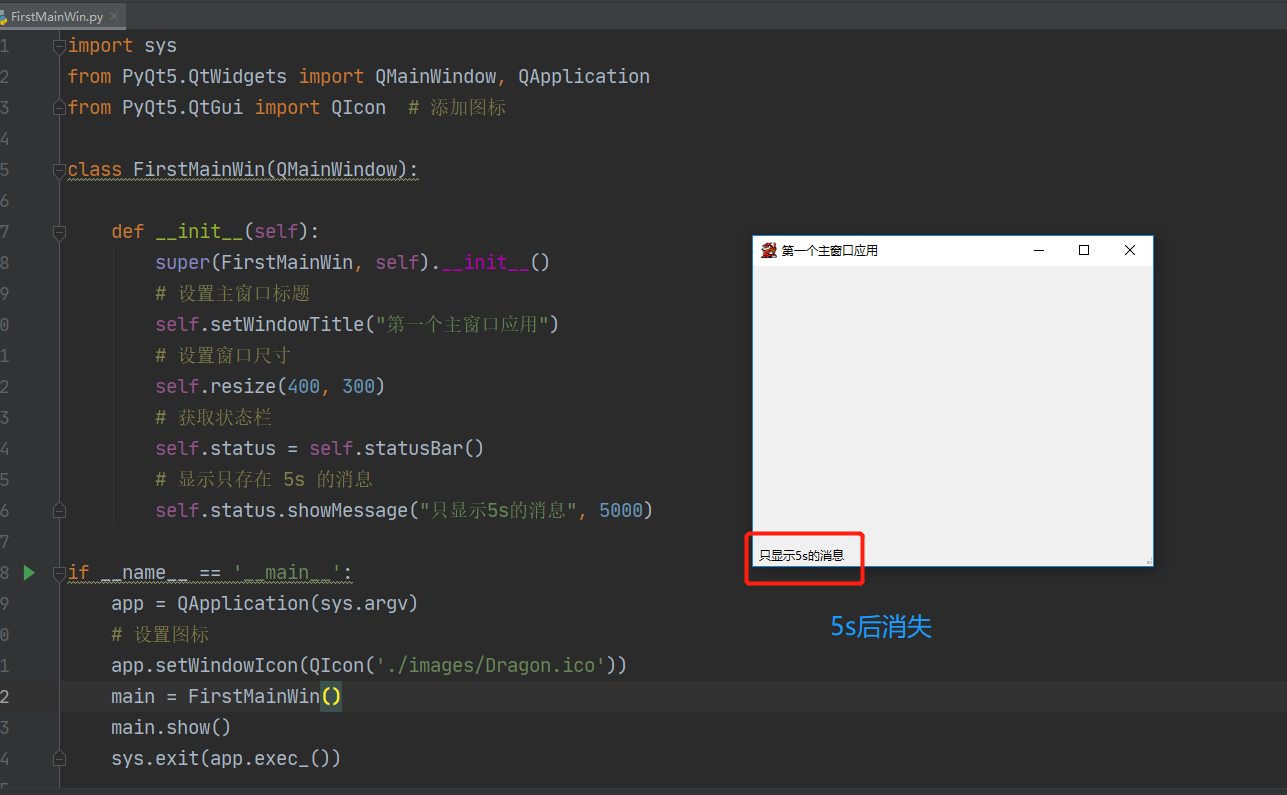
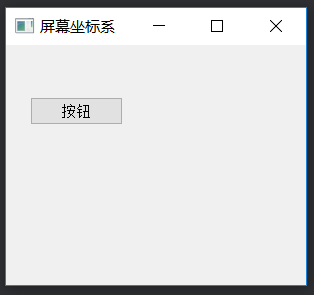
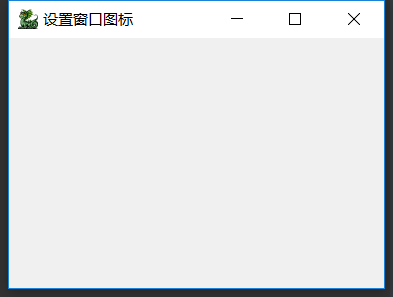

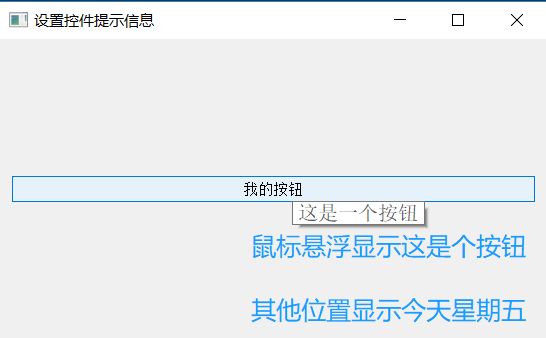
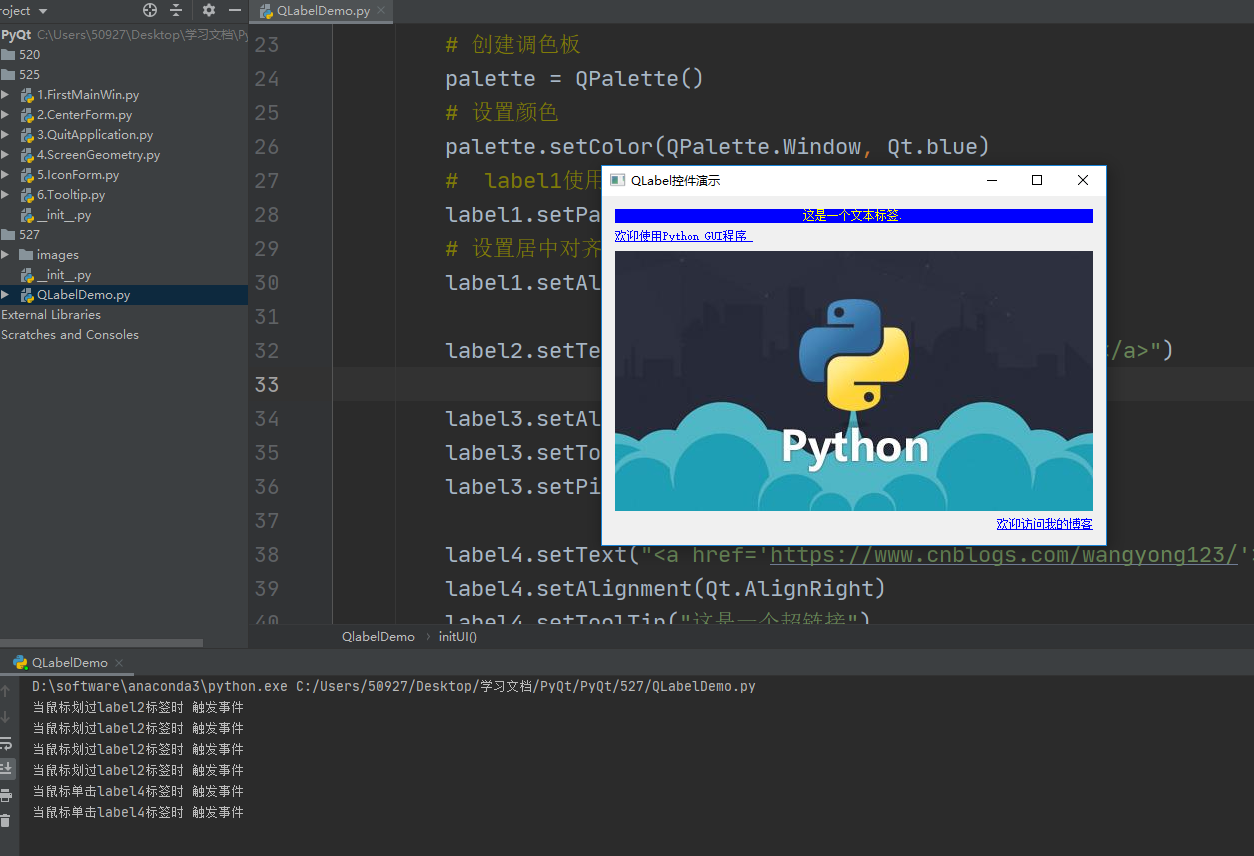

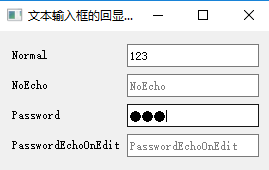
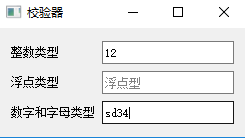
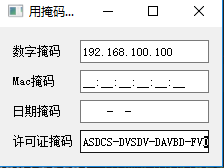
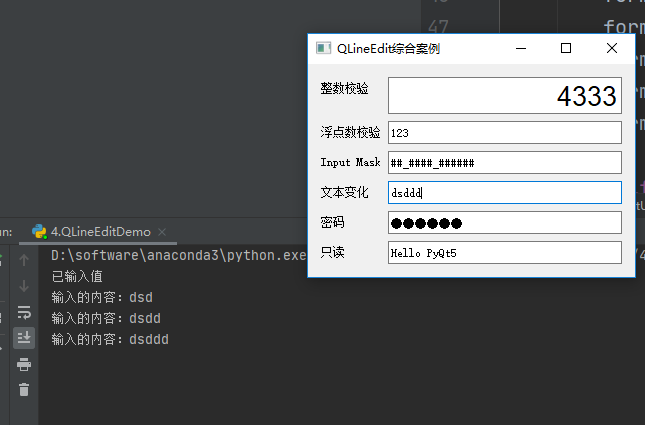

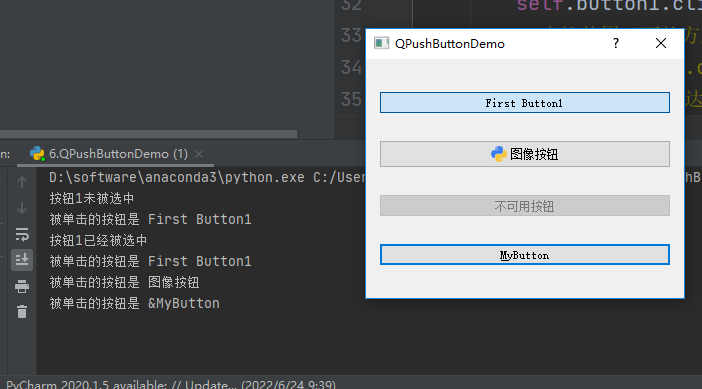
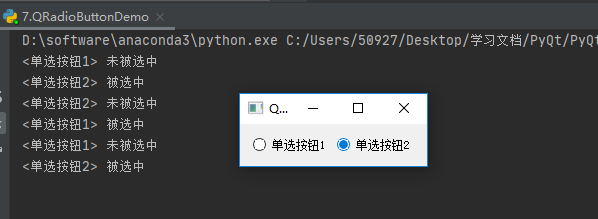

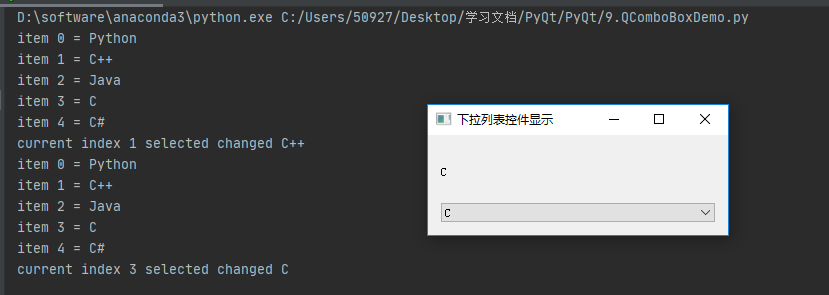
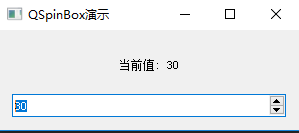
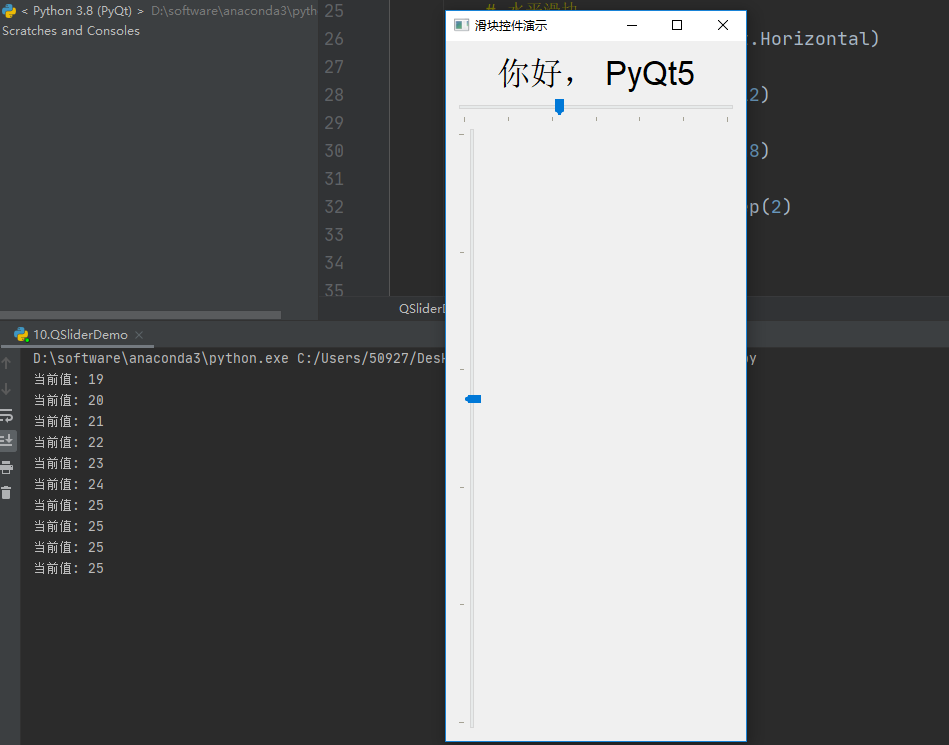


 浙公网安备 33010602011771号
浙公网安备 33010602011771号